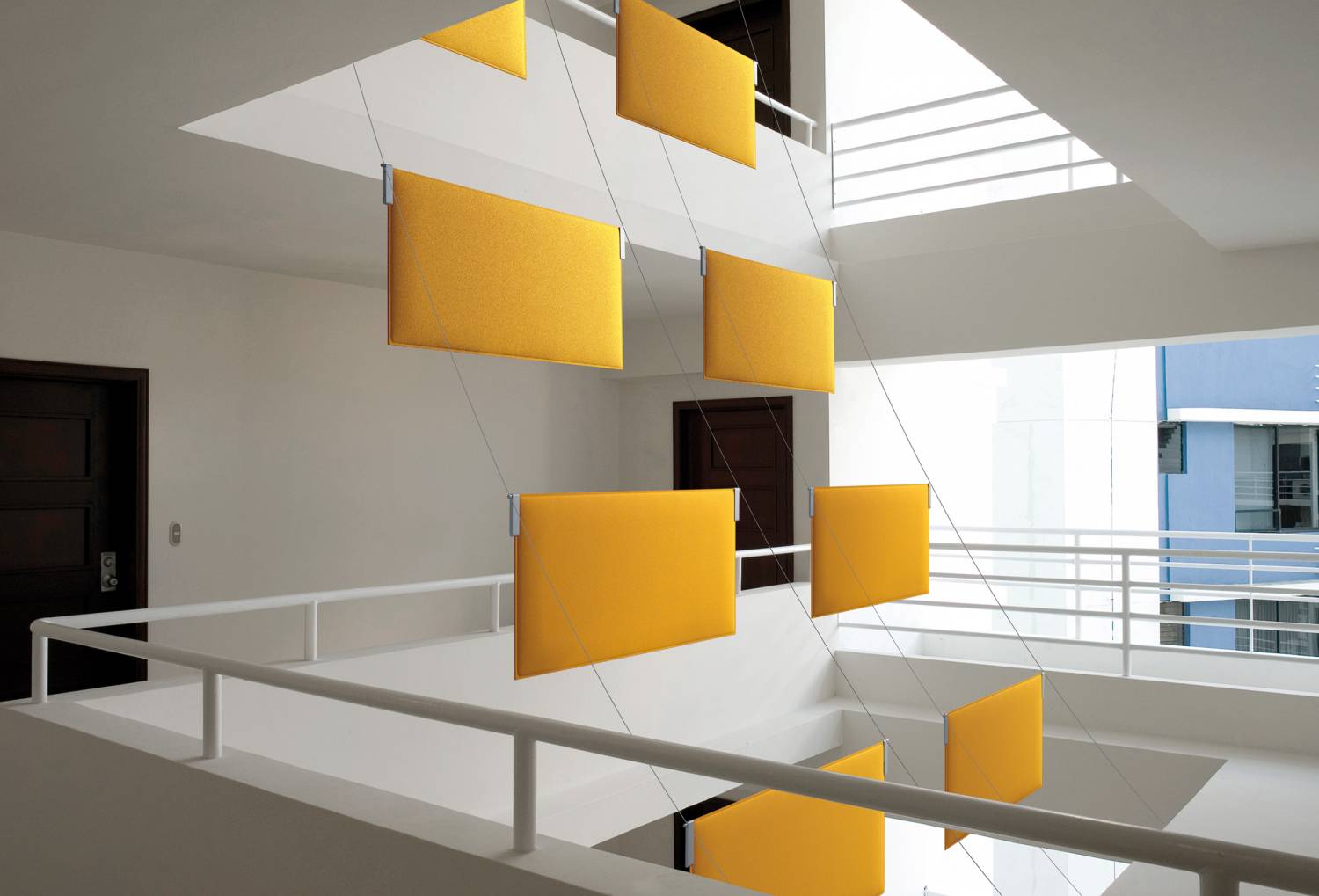13th June 2016
All About Acoustics
An Introduction
Our understanding of how people function in the open plan office has evolved over the last 20 years. In particular, much research has been conducted regarding the effect of the acoustics in the workplace and how this influences productivity and wellbeing.
In fact, the majority of office workers identify noise as a major concern. Studies have shown measured physical symptoms of stress and quantifiable loss of productivity when people are exposed to an uncomfortable acoustic environment. In addition, employees’ own perceptions of satisfaction and wellbeing have been shown to be negatively affected.

Previously when it came to solving acoustic problems and improving the environment, the focus was on lowering noise levels however, it was soon discovered that this alone was ineffective and in many cases made the situation worse. In recent years, it has become apparent that acoustic comfort in work environments is not only to do with noise levels but is also dependent on the degree to which we can clearly understand speech. The clearer or more intelligible speech is, the greater its potential to cause distraction. Conversely, the more muffled or less intelligible speech is, the less likely it is to be distracting to listeners and the more acoustic privacy is afforded to the speakers.

In spaces where we wish to communicate with each other and be heard clearly, such as a meeting room or brainstorming area, the degree of speech intelligibility should be high between conversational partners. In these areas, sound should travel efficiently between the speaker and the listener. However, in zones where focus is required, without interruption from others, clearly understood speech arising from nearby areas is distracting. In these zones, it is therefore desirable to have a lower level of speech intelligibility. In confidential meeting spaces, it is important to achieve the best of both worlds – an area in which conversational partners can be understood by each other, but not by passers-by.
In these areas, it is essential to understand that speech privacy is not the same as inaudibility, but rather that the intelligibility of speech is reduced to a level at which it can no longer be understood.
The different working styles of individuals must also be taken into account, as well as the tasks they are carrying out. Repetitive tasks such as stapling and filing may be best performed in a livelier area of the office, whereas tasks requiring complex calculation and memory would typically best be performed in a space with fewer distractions, both visual and auditory. It would seem, therefore, that good acoustic design for workspaces is not a case of ‘one size fits all’, nor is it as simple as ‘caves-and-commons’ but rather the inclusion of a range of areas with appropriate acoustics to their function, that is, varying levels of background noise and speech intelligibility.
Meet Ros

For More Info
For more information about our Acoustic offering and to find out more about Ros, our independent acoustic expert please follow the links below: